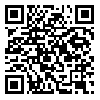, nasrollahy5@gmail.com
Abstract: (136 Views)
Employment is one of the most important issues that any country faces. Employment plays a vital role not only for individuals but also for the economy as a whole, and provides a deep understanding of the labor market conditions of an economy. In this regard, the minimum wage is an important factor that affects the labor market. The literature on the minimum wage uses two labor market models. The standard competitive model, which predicts that the minimum wage will have negative employment effects. In other words, under conditions of perfect competition, economic theory suggests that a higher minimum wage will lead to job losses, and noncompetitive labor market models, which predict that the minimum wage will have positive employment effects. However, it is generally unclear whether minimum wages have a positive or negative effect on employment, or are ineffective. Therefore, the aim of this study is to examine the effects of the real minimum wage on employment in Iran, within the framework of a multiple regression model and OLS estimation during the period 1379-1400. The results of the regression analysis show that the increase in the real minimum wage has a significant negative effect on employment, so that with a one-unit increase in the real minimum wage, employment decreases by about 0.37 units. Therefore, taking the above into account, it is suggested that the increase in the minimum wage should be made as proportionate as possible to the Labor productivity in the economy
Send email to the article author
| Rights and permissions | |
 | This work is licensed under a Creative Commons Attribution-NonCommercial 4.0 International License. |





